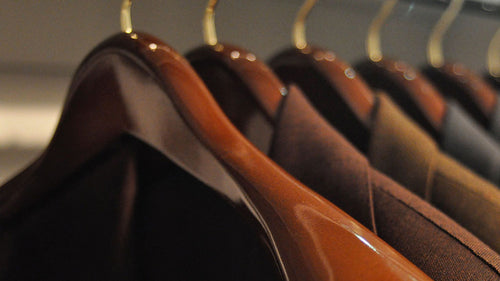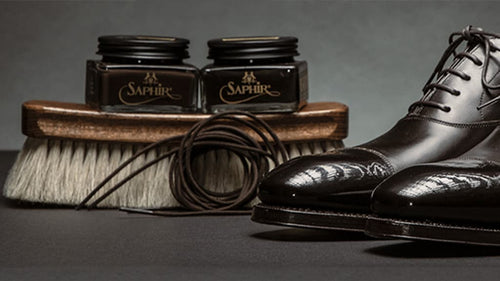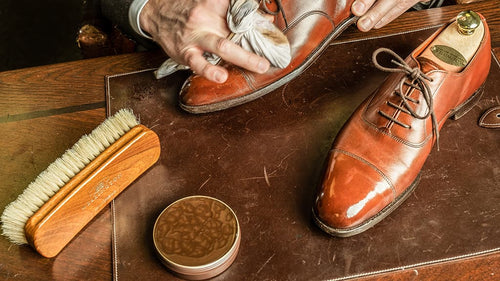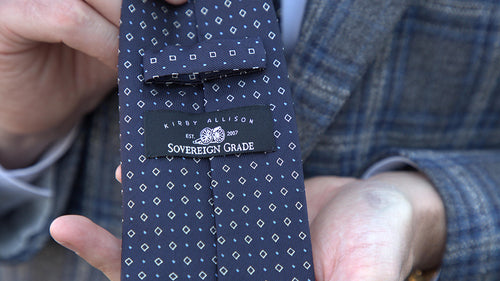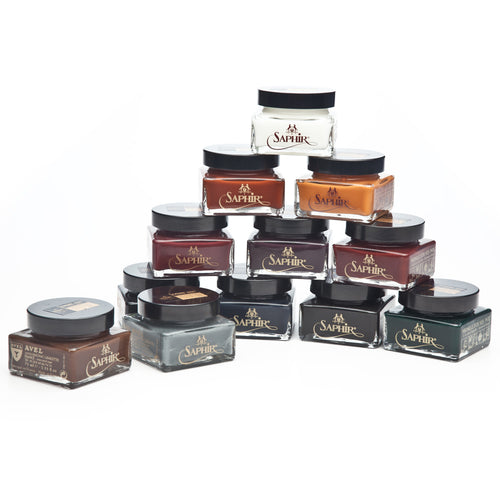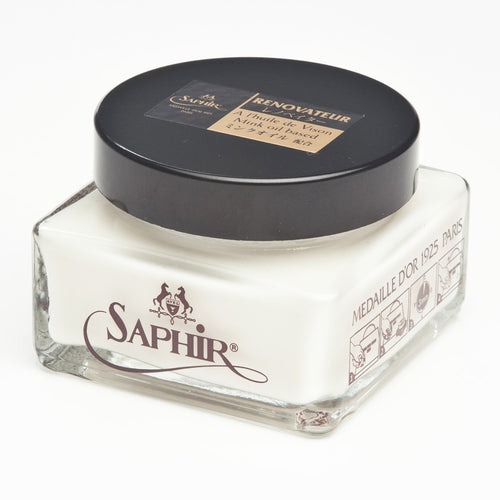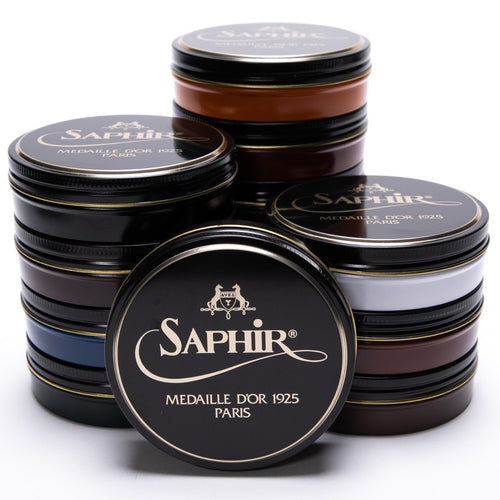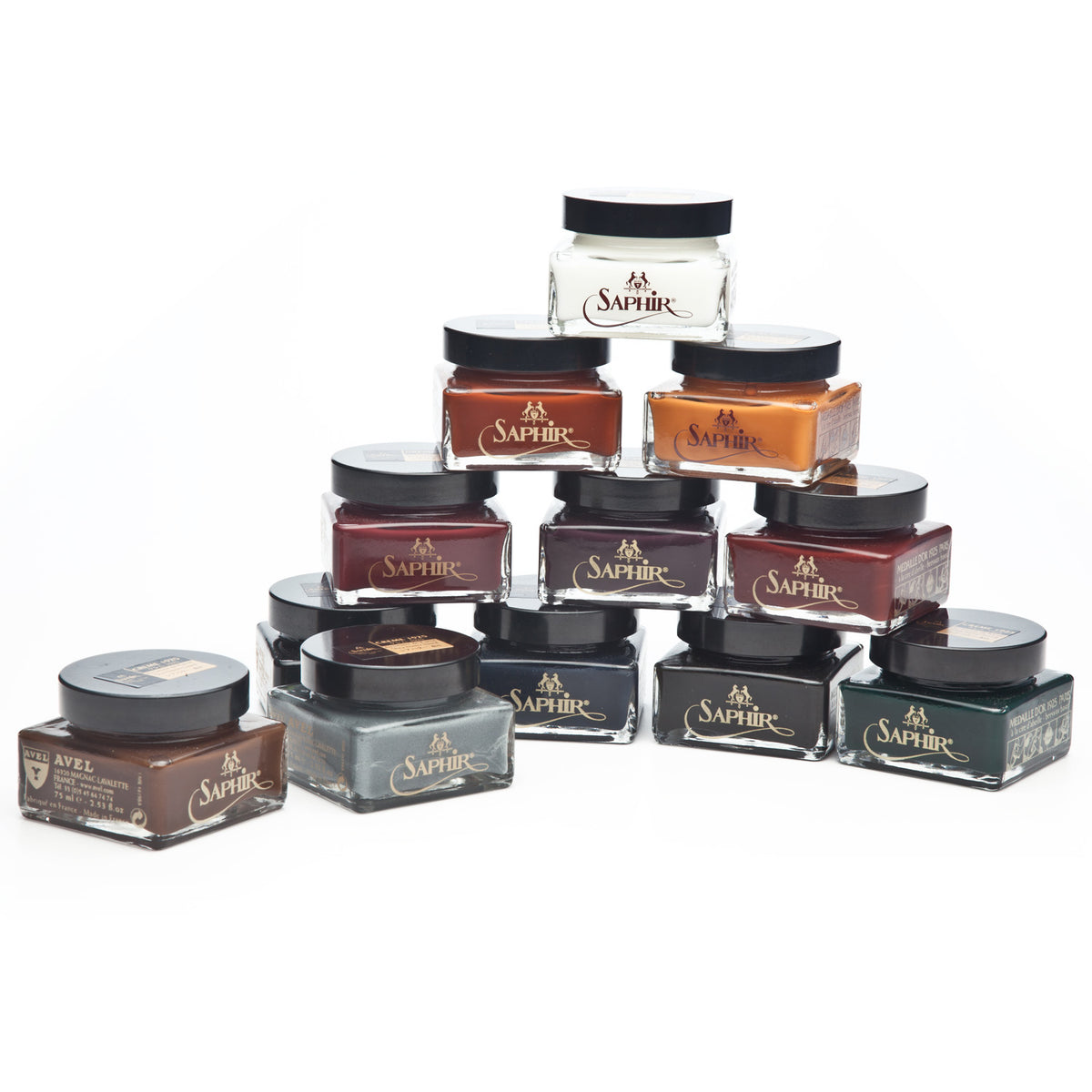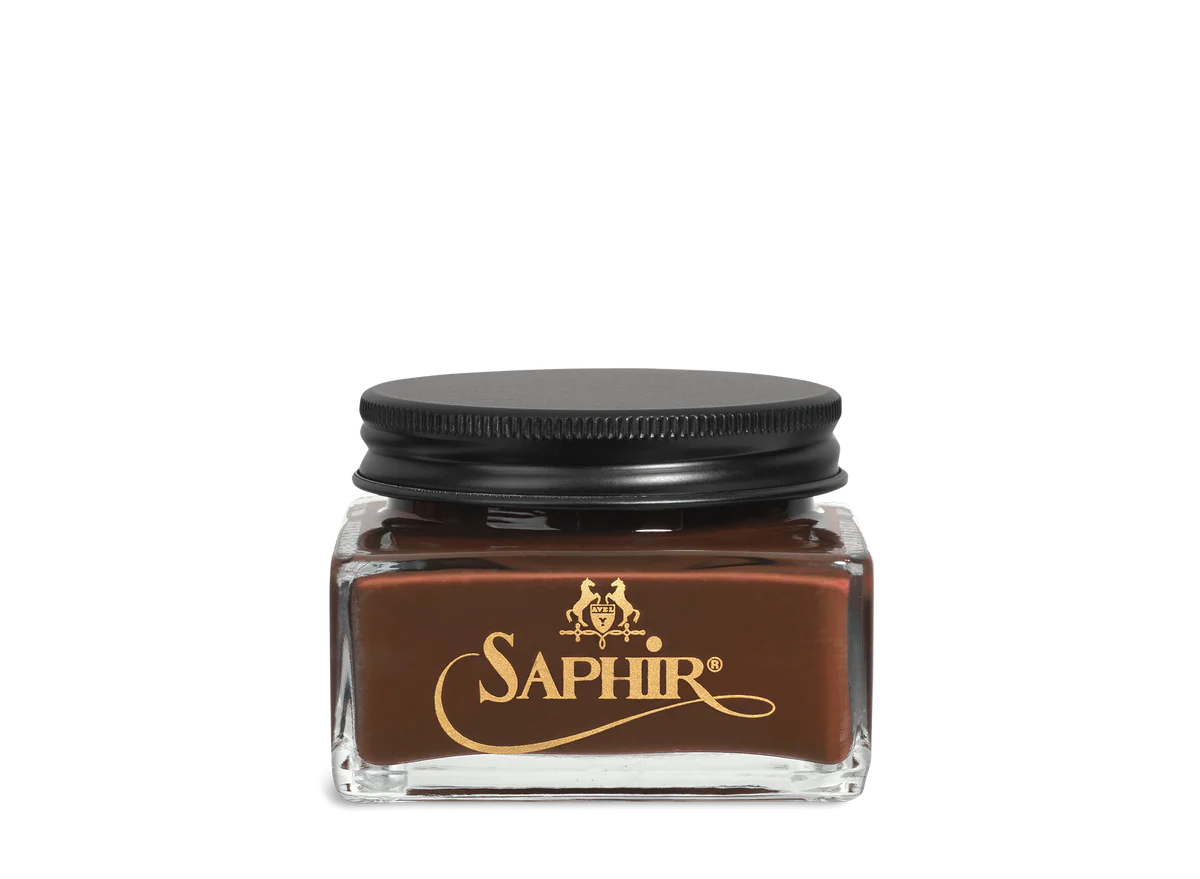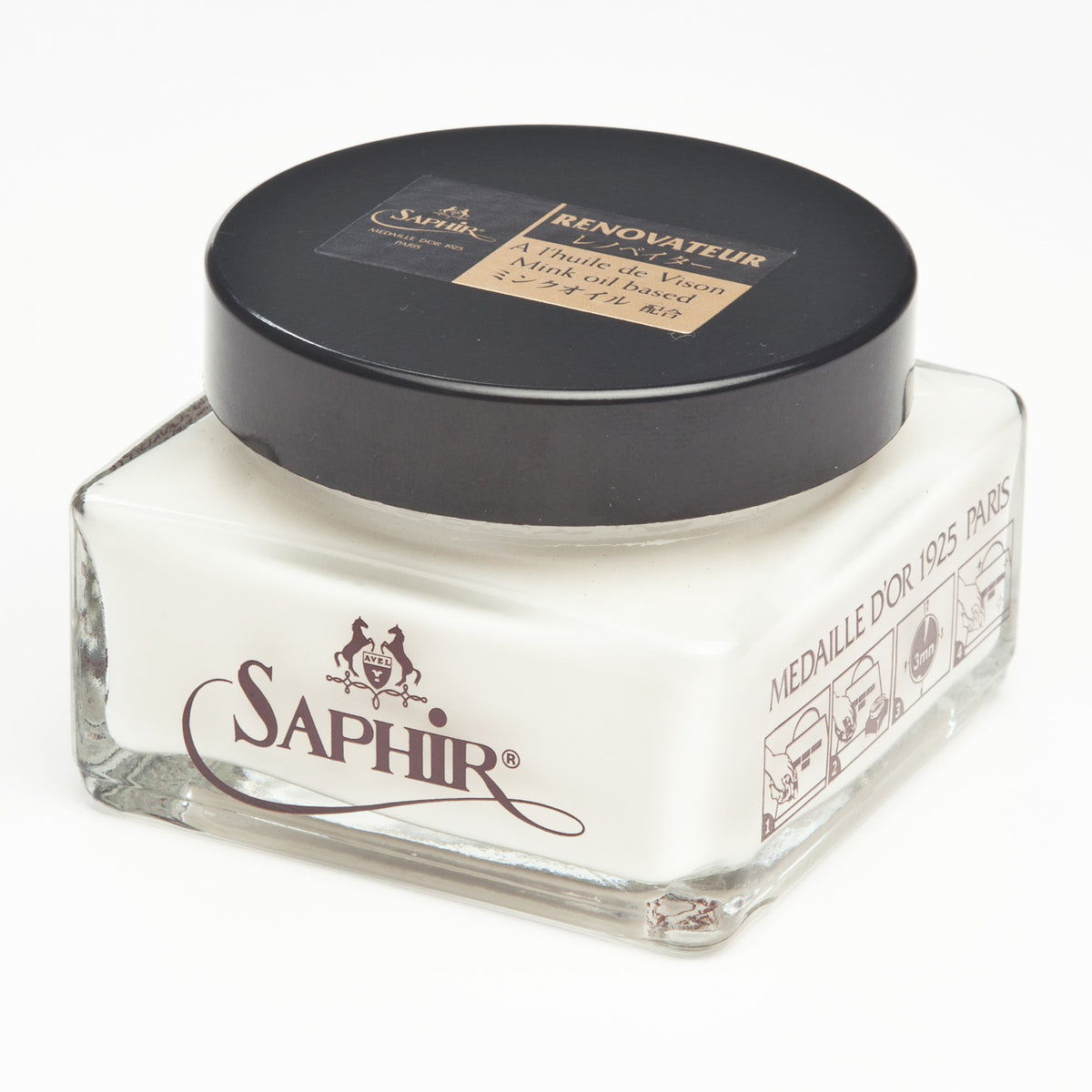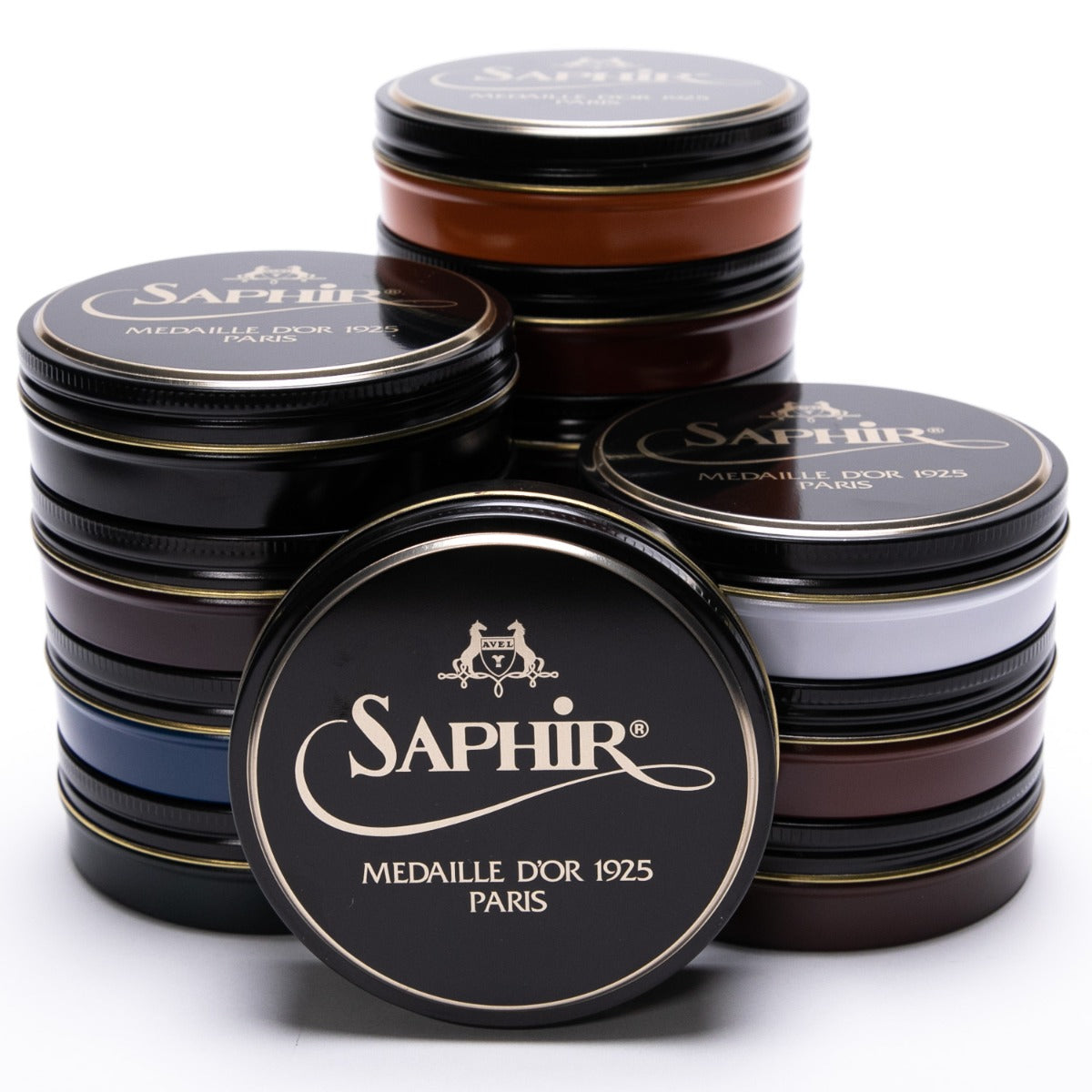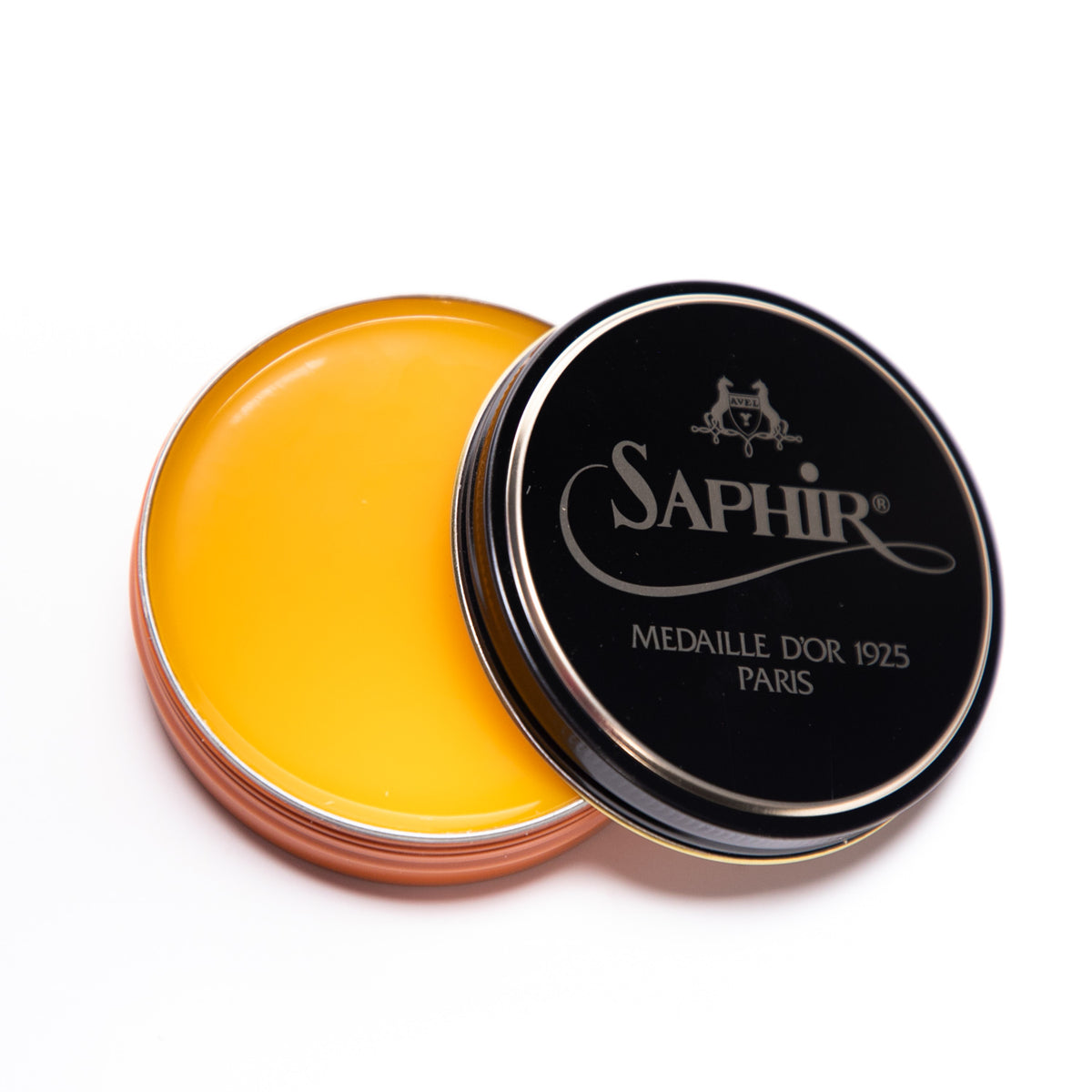Learn how to condition and polish reptile leather shoes using Saphir Medaille d'Or products.
Products used in this video:
Transcription
Hi, I'm Kirby Allison founder of The Hanger Project and today I'm going to be showing you how to both condition and polish your crocodile and alligator shoes, or exotics. These reptile skins are generally very durable, but they do require regular conditioning in order to prevent them from drying out and having the scales crack. I'm going to be using the Saphir Reptan, which is a water based conditioner. The little bit of waxes use a lanolin oil, which comes from sheep in order to condition the crocodile. Then, if necessary, you can use a pigmented cream polish such as the Saphir Pommadier cream to add pigmentation if there is any type of discoloration or scuffing. These shoes are pretty good so I'm probably not going to use that. The Reptan provides a nice shine, but if you do desire a little bit of a higher gloss shine on the toe box, what I'm going to recommend is that you use the Saphir Mirror Gloss because of its lower concentration of solvents. What that's going to do is allow you to really focus on building up the hard wax content in order to produce a shine without actually penetrating the leather or the crocodile as much as a normal Pate de Luxe wax polish would.
The shoes that I'm polishing today I actually inherited from my grandfather. So being that they're 30 to 40 years old they're actually in pretty good condition. It's just a testament to how long a pair of shoes can last if you're taking care of them properly. The only thing that I would say about these is that I did replace the sole and had them re-soled by a shoemaker whenever I first received them, and you can see that there is one scale that is actually cracked that occurred just because my grandfather probably wasn't conditioning these properly. But since in my care I think that they've been looking great and they're really special to me. I enjoy wearing them and it's important that I take care of these properly.
First we're going to condition the crocodile using Reptan. Reptan is a water based conditioner that uses lanolin oil in order to condition the crocodile or alligator. It contains a low concentration of waxes so you're still going to get some wax protection, but not as much as you would get from a wax polish. Now you could clean the shoes first using the Saphir leather cleaning soap but these are in pretty good condition so I'm just going to skip that altogether in order to reduce the amount of wear on these shoes. Use a cotton chamois.
There's a few things that are different when conditioning an exotic from a conditioning like calfskin. The first thing is that it's really important that you allow as much time as possible for the crocodile to absorb the Reptan. What I like to do is I like to apply a pretty thick layer and then allow as much time as possible, so either allow the shoe overnight to absorb that, or at least at a minimum a few hours. I've applied the Reptan conditioner to these shoes and now I'm going to allow them two to three hours at least- or overnight if you have the time, for the conditioner to dry. Once it's fully dried then we'll be able to buff it off with a horsehair brush.
After you've allowed the Reptan conditioning cream to dry, the next step is to then brush off the cream residue using a shoe shine brush. I really recommend if you have it, a slightly stiffer bristled brush in order to get as much of the polish and the contours and grooves of the scale pattern. I am using one of our pig bristle brushes, but if you have a horse hair brush that's fine, you just might need to do a little bit of extra brushing. I'm going to brush the cream off until it develops a soft shine with brisk, back-to-back motions.
Now that the Reptan is brushed off these crocodile shoes, you can see that they have developed a nice, soft shine. If you're happy with this level of shine and if you don't need any color then you can finish here. But these shoes have a few scuffs and other kinds of cosmetic things where I think that I do need to introduce pigment and so at that point the next step is to use a pigmented cream polish such as the Pommadier cream polish in order to get that pigmentation. I would only recommend doing this if you feel that your shoes need pigment because otherwise you would want to avoid using something designed for calfskin on an exotic leather. If you do it only whenever you need it, I think you're going to be fine.
What I'm going to do is to apply this with a cotton chamois. This is a dark brown for these dark brown shoes, and again because this is a product for calfskin, I'm just going to apply it relatively sparingly. The purpose of using a pigmented cream polish is the recoloring. You've already conditioned with the Reptan so we're just trying to renew the finish and conceal any types of scratches and scuffing- this is not for conditioning. I've applied a very light coat of the Saphir Pommadier cream polish to help us recolor. I'm going to let this dry for a few minutes and then we're going to buff it off. The Pommadier cream polish dries a lot faster than the Reptan. I just left that on the shoes for a few minutes and I can see that it's dry, so I'm just going to buff this off with the same pig bristle brush that I used for the Reptan.
Now that the Pommadier cream polish is buffed off, you can see that these shoes have a nice, soft shine. Depending on your preference for shine, this may be perfectly adequate, but if you do want a higher gloss shine than what you can get here alone, then you're going to need to use a wax polish and that's what we'll talk about next. As I mentioned earlier, if you'd like a higher gloss than which you're able to get from just the Saphir Reptan or the Pommadier cream polish alone then you really do have to use a wax polish. For exotics especially, I recommend using the new Saphir Medaille d'Or mirror gloss. The reason is because it has a much lower solvent concentration or solvent ratio than a standard wax polish, it's just going to penetrate the skin much less than that Pate de Luxe and you really want to avoid that as much as possible since the reptile leather is so different from calfskin.
I'm using the high gloss or the mirror gloss and my high shine chamois just because the mirror gloss applies so much better with this. You're essentially going to go through the same steps that we have outlined in our mirror shine video- so if you want to see this in more detail, please reference our high shine/mirror shine video. Basically I'm going to wet my chamois and the reason you're doing this is because the mirror gloss is quite a dry polish because it has such a low solvent to wax ratio. Then what we're going to do is we're going to apply this to the front toe box the same way you would on a pair of calfskin. At this point there's really nothing different that you're doing than if you were doing this on any other pair of shoes. I'm going to apply successive coats of this high gloss polish, allow it to dry, apply more coats, and then I'm going to slowly buff and polish it using the high shine cotton chamois.
Once you've allowed the mirror gloss to dry, the next step is to take a clean part of your chamois with a little bit of water and buffing that to a shine. Because of the scales on any type of reptile creating an unsmooth surface, you're really going to have to apply several layers of the wax polish in order to help smooth out some of those irregularities to develop that shine. Once you feel like you buffed as much of a shine out of that polish as possible, the next step is to continue to apply successive layers until you reach your desired level of shine. I'm going to go with a few more layers. Again, the mirror gloss, if you're not used to working with this, is very different than a standard wax polish because it is so much more dry, has so much less solvent and such a higher concentration of hard waxes, that you are really putting a lot of pressure into this. One of the tricks that I like to do especially when trying to develop a little bit of a higher gloss shine, is to really use the Saphir mirror gloss as building that foundation and then coming on top of that with a little bit of Pate de Luxe Medaille d'Or wax polish. Just a really light coat. You're almost just tapping your chamois on that and a little bit of water, what I find is that it helps produce that gloss. You need that wax foundation in order to produce a high gloss (that's what the mirror gloss is for) but I find that the Pate de Luxe is nice for a little bit of finishing.
Here’s a pretty nice shine now on the toe box of these Maui crocodile cap toe oxfords. You certainly could go even higher if you wanted to, it's just a matter of time in terms of building more and more of a wax foundation with Medaille d'Or mirror gloss but this is good enough for me. The next step now that we're done with this is to take a little bit of edge dressing along the edge here because it's easy, so we're going to detail that next. OK so the last step, again, completely optional but in the interest of being comprehensive here, we're going to apply an edge dressing. I'm going to use my favorite Saphir edge dressing which is the Teinture Francaise. It's actually an alcohol based leather dye so you have to be careful with it, but it's a fantastic edge dressing, very permanent, does a great job penetrating the leather, and is my favorite to use. It comes with this little cotton applicator, again you definitely want to be careful with this because it's permanent. If you get it on your table it will dye that table forever, you'll never get it out. Same thing with the leather of your shoes, if you get it on the upper, you're not going to get this alcohol based liquid dye out, so be very careful. I'm just going to run it along the edge to dye those edges. After you're done, you can even come on top of this with a little bit of wax polish if you want to elevate the shine. You can take a look at that in our complete edge care tutorial but right here, I'm just covering the basics. The edges have been recolored and fully conditioned. I applied a pigmented cream polish to help recolor any scuffs, nicks, or scratches and then finished with the mirror gloss and a little bit of Pate de Luxe to gloss up the toe box here, and then finally a little bit of the Teinture Francaise for the edge.
I have to say that the shoes really look fantastic. I mean look at these crocodile shoes, they look fantastic. I can't wait to wear them. We've been able to completely condition them, polish, and then shine them using the Saphir products. Just as an overview, we started out with the Saphir Reptan to condition, we allowed that to sit on the shoes for as long as possible, and then optionally, we used a pigmented cream polish (the Saphir Medaille d'Or Pommadier Cream polish) to add pigmentation, again, that's optional. Then in order to elevate the shine of the toe box, I used to Saphir Medaille d'Or Mirror Gloss which is absolutely perfect for exotic leathers because it doesn't have as much solvent as the standard Pate de Luxe, and you can see we were able to get a beautiful shine on these shoes.
So with that we're finished. If you have any questions feel free to e-mail us at shoeshine@Hangerproject.com or you can comment in the comments below and we're always trying to answer those questions. So again, I'm Kirby Allison, founder of The Hanger Project, and thanks for joining us.


